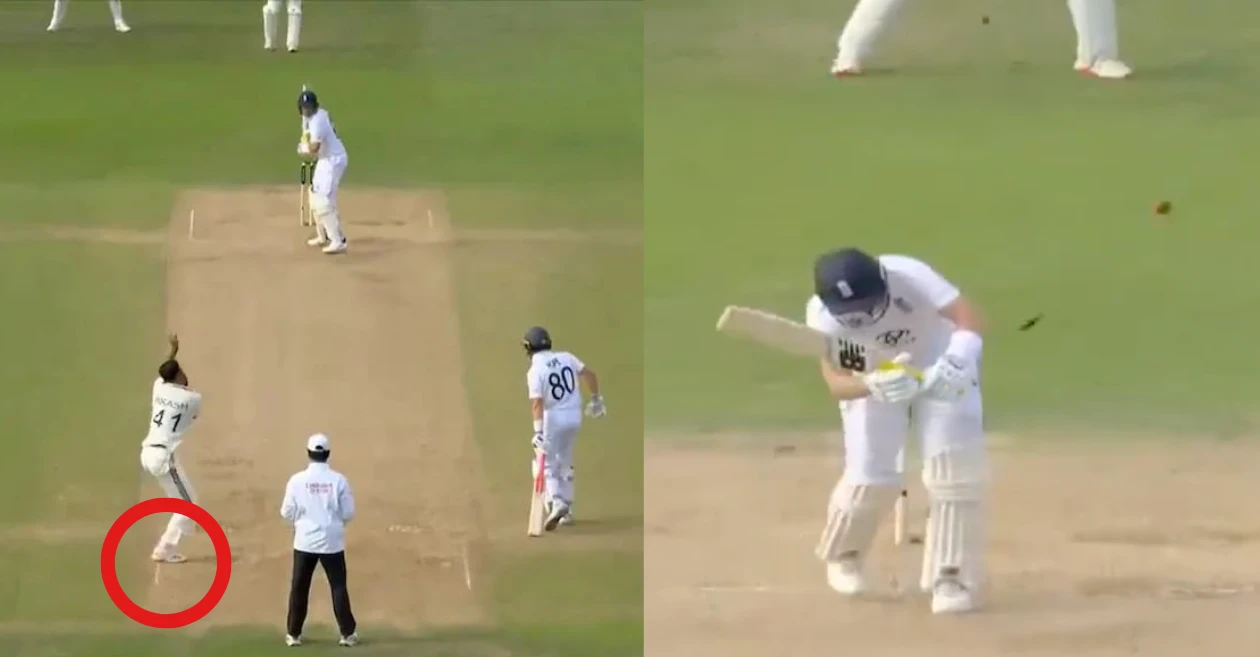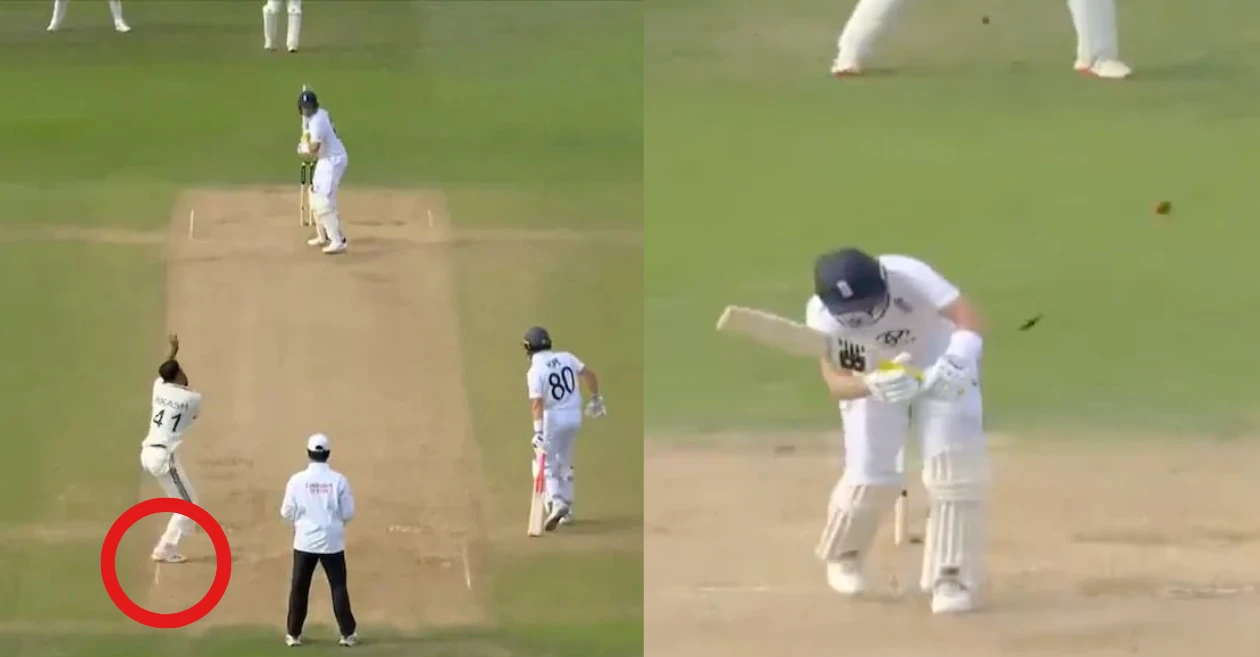
The second Test match between England and India at Edgbaston has been a riveting contest, showcasing exceptional cricketing talent from both sides. However, the spotlight has unexpectedly shifted from the thrilling on-field action to a single, contentious delivery from India’s fast bowler, Akash Deep, which dismissed England’s star batter, Joe Root, for a mere six runs on Day 4. This particular ball has become the epicentre of a heated debate, raising questions about its legality and the application of cricket’s lesser-known back-foot no-ball rule.
Akash Deep cleans up Joe Root
The incident unfolded on a crucial Day 4, with England facing a daunting target of 608 runs. The Indian attack was pressing hard for breakthroughs, and Akash Deep, bowling with pace and precision, delivered a ball that clean-bowled Joe Root, sending the stumps cartwheeling. The dismissal was initially hailed as a pivotal moment for India, potentially swinging the momentum decisively in their favour. However, the celebrations were quickly overshadowed as commentators and fans began scrutinising the legality of the delivery. Alison Mitchell of BBC Test Match Special was among the first to voice her concerns on air, highlighting that Akash Deep’s back foot appeared to have landed outside the return crease—a potential infringement of the back-foot no-ball law.
Give sun , give me fire
Give me flat pitch, C grade Bowling attack and B ranked teams to statpad….
Or I retire 😂😂
“Joe Statpadder Root”#ENGvIND pic.twitter.com/FESDLm7P9c
— Classic Mojito (@classic_mojito) July 5, 2025
While the front-foot no-ball is a familiar concept to most cricket enthusiasts, the back-foot no-ball, though equally significant, often receives less attention. The Marylebone Cricket Club (MCC) Laws of Cricket clearly define the parameters for a legal delivery, including specific stipulations for the bowler’s back foot.
According to Law 21.5.1: “The bowler’s back foot must land within and not touch the return crease during the delivery stride.” This means that any part of the back foot, when it makes contact with the ground during the delivery, must be entirely inside the designated return crease.
In contrast, Law 21.5.2 addresses the front foot: “The front foot must land with some part of the foot, whether grounded or raised, on the same side of the imaginary line joining the two middle stumps as the return crease and behind the popping crease.”
Crucially, if the bowler’s back foot lands outside the return crease, the delivery is automatically deemed illegal and should be called a no-ball, irrespective of the front foot’s position.
Also READ: ENG vs IND 2025, 2nd Test – Hourly weather forecast and rain prediction in Birmingham on Day 5
On-Field oversight: A missed call?
Replays of Akash Deep’s delivery to Root clearly showed the bowler delivering from wide of the crease. The visual evidence suggested that his back foot landed approximately two inches outside the return crease. Despite the apparent infringement, the on-field umpires did not call a no-ball. Furthermore, the third umpire, who typically uses technology to meticulously check front-foot no-balls, also did not intervene. This reliance on the naked eye for back-foot violations, unlike the technological precision applied to front-foot checks, is a key point of contention in such incidents.
Former cricketers and respected commentators, including Ravi Shastri and Stuart Broad, engaged in a live discussion about the incident. Their interpretation centred on the fact that while the foot was indeed over the line, it was airborne at the precise moment of ball release. They argued that this “hovering” made the delivery legal. However, the strict wording of the law specifies where the foot “lands,” not where it “hovers,” creating an ambiguity that fuels the ongoing debate.

